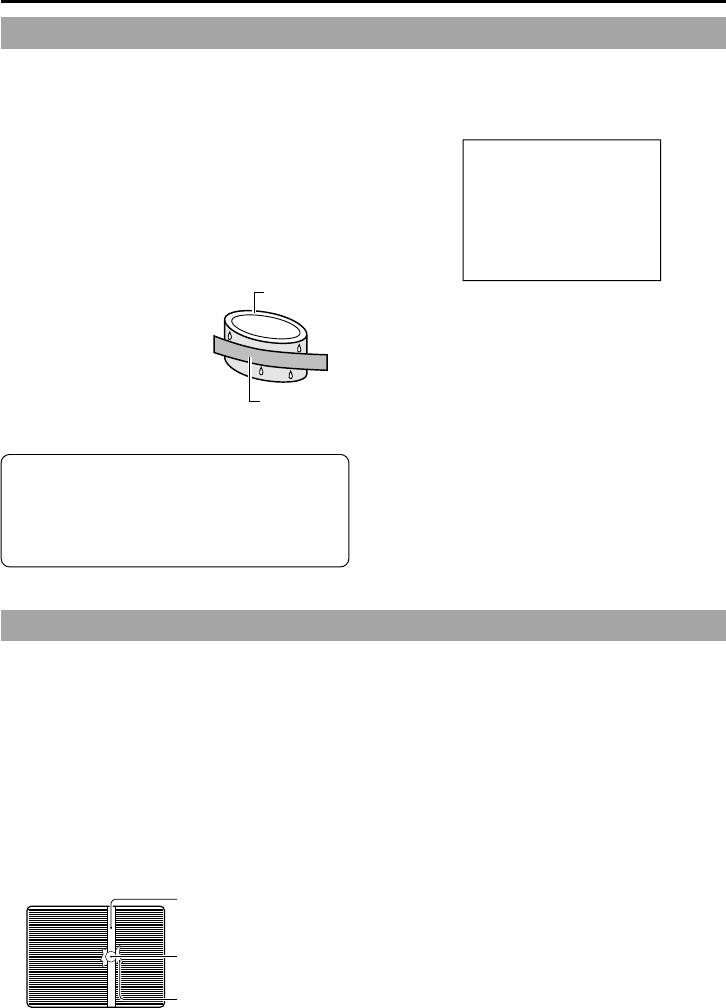
E-11
Condensation
● If the unit has been cooled down in a cold place
and is then carried to a warm place, the moisture
contained in the warm air may adhere to the head
drum or tape guides and be cooled into water
droplets. This phenomenon is referred to as
condensation (dewing). When this occurs, the
head drum and tape guides are covered with
droplets allowing the tape to stick to them, leading
to tape damage.
● Condensation occurs in the following cases:
• When the unit is suddenly
moved from a cold place
to a warm place.
• When a room heater has
just started or when the
unit is exposed directly to
cold air from an air
conditioner.
• When the unit is placed in a very humid place.
Do not leave the videocassette inserted when
moving the camera under conditions where the
temperature environment changes.
After moving the unit, do not use until the
internal parts have stabilized.
● When condensation occurs in this unit, the “VTR
WARNING (DEW)” appears on the LCD screen
and the viewfinder screen.
To remedy, leave the unit with the power ON and
wait until the WARNING indicator disappears.
● Prevention of condensation
When quickly transporting the GY-DV300 from a
cold to a warmer place, first take out the cassette.
Then place the GY-DV300 in a plastic bag and
seal it before transporting the camera. Leave the
GY-DV300 in the sealed plastic bag until the
camera has the same temperature as the
surroundings. This will prevent condensation.
Monitor screen
Smear
(Vertical pale streaking
appearing at high
luminous object)
High luminous object
(Electric light, sunlight, etc.)
Blooming
(Blurring in highlight)
Videotape
Head drum
VTR WARNING (DEW)
Characteristic CCD Phenomena
Smear and Blooming
Due to the physical structure of a CCD it is possible
to induce vertical streaking (called “smear”) when
shooting an extremely bright light source. Another
effect is the expansion of light around a bright light
or object (called “blooming”).
The CCD employed in this unit is characterized by
inducing very little smear or blooming.
Nevertheless, please be careful when shooting a
bright light source.
Moire or Aliasing
Shooting stripes or fine patterns may cause a
jagged effect or a banding in fine mesh patterns.
White dots
High temperatures can cause CCD sensor pixels
to malfunction with the effect of white dots in the
image. This condition is conspicuous especially
when gain is applied.
This is a characteristic of the charged-couple device
(CCD). As far as possible, use the unit under
conditions where the temperature of the unit does
not increase.


















